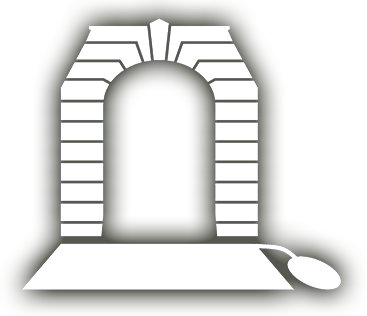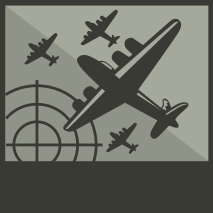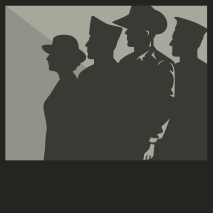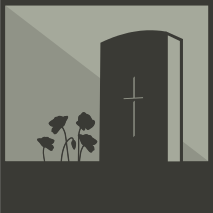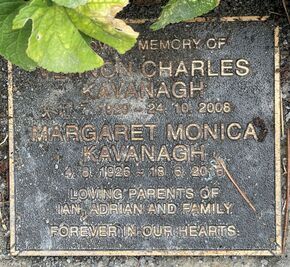KAVANAGH, Vernon Charles
| Service Number: | SX8237 |
|---|---|
| Enlisted: | 6 July 1940, Adelaide, SA |
| Last Rank: | Sergeant |
| Last Unit: | 2nd/48th Infantry Battalion |
| Born: | Mile End, South Australia, 11 January 1919 |
| Home Town: | Wirrabara, Mount Remarkable, South Australia |
| Schooling: | Not yet discovered |
| Occupation: | Not yet discovered |
| Memorials: | Wirrabara District WW2 Honour Roll |
World War 2 Service
| 6 Jul 1940: | Involvement Sergeant, SX8237 | |
|---|---|---|
| 6 Jul 1940: | Enlisted Adelaide, SA | |
| 6 Jul 1940: | Enlisted Australian Military Forces (WW2) , Sergeant, SX8237 | |
| 6 Jul 1940: | Enlisted Australian Military Forces (WW2) , 2nd/48th Infantry Battalion | |
| 10 Oct 1945: | Discharged Australian Military Forces (WW2) , Sergeant, SX8237 | |
| 10 Oct 1945: | Discharged | |
| Date unknown: | Involvement |
In His Father’s Footsteps.
Vernon’s father, Charles Kavanagh worked as a blacksmith in Wirrabara, a small town in the Southern Flinders Ranges, now renown for the historic Wirrabara Pine Forest, planted in the 1870’s to provide sustainable timber for South Australia.. Aged 31, he volunteered to serve in WWI on the 11th January 1916, being given the number 5365 and placed in the 27th Infantry Battalion. As Signaller Kavanagh, he married Elsa Louisa Richardson on the 8th April that year just prior to sailing for the War. Their first child, Nancy Lenora was born in March ‘17 while Charles was overseas. He served in France and was fortunate to survive the decimating conflict at Etaples. Charles developed synovitis in his right knee, which may have contributed to his survival, and served until finally discharged on the 16th October 1919.
Charles returned to Australia, with he and Elsa soon welcoming Vernon who was born at Mile End, an outer suburb of Adelaide, and carried his father’s name, ‘Charles’. The timing of Vernon’s birth and Charles’ return suggest that the discrepancy between the date of birth Vernon gave on his enlistment (11th January 1919) was incorrect. His birthdate when he later joined the Light Horse Brigade and that on his headstone are both recorded as being 11th July 1920, so would be correct. Siblings Allan John, Edward Leon (‘Ted’) and Beth arrived in the ensuing years.
The children attended the local Wirrabara School and became involved in the community. At different times, Vernon was known as ‘Vern’ and ‘Kav’. As a young man, Vernon proved to be a capable bowler, playing cricket for Wirrabara and excelling for the town’s football team where he played in the forward lines and was frequently named in the best player list. The Pirie Recorder analysed local players from opposing teams, summarising Vernon as being ‘Wirrabara’s best for his splendid kicking and marking which are a feature of the play of V. Kavanagh (Wirrabara).’
While older sister Nancy passed her midwifery exams at the Peterborough Soldier’s Memorial Hospital, post school Venon worked as a baker and was also an active part of the 9/23rd Light Horse Regiment as 543618, providing his own horse. However, with the outbreak of WWII he became an early enlistee on the 6th July ’40. It was inevitable that he would almost immediately be graded as a Group II Cook.
Following pre-embarkation leave, Vern boarded the Stratheden in November, arriving in the Middle East on the 17th December. Unfortunately, within a month, he had his right cartilage removed, hospitalising him for two weeks.
Soon after Vernon was quite harshly punished with 8 days confined to barracks for his ‘conduct to the prejudice of good order and discipline’. This had no lasting effect as by October ’41 he was promoted to Acting Corporal, reverting to Private a few months later, then reinstated in July ’43. Over this time Vernon relinquished, then reinstated his Group II Cook role. He was to become one of the highly respected Rats of Tobruk, a term initially designed to destroy morale and encourage the troops to surrender. Typically, it had the opposite effect and was seized on as a badge of honour.
With the battalion finally returning to Australia in February ’43 via Melbourne, Vernon again attended a Cook’s Course for Non Commissioned Officers, qualifying in August. At the time he was also training in Queensland to prepare to face a very different enemy in the tropical conditions of New Guinea.
On his arrival in Milne Bay, Vernon was immediately promoted to Corporal and six months later to Acting Sergeant. Several tropical illnesses, including an extremely high temperature (Pyrexia of Unknown Origin) and Dengue contributed to his return to Brisbane, where unfortunately he was also treated for appendicitis, followed soon after by a further promotion to sergeant.
In a frustrating incident back in Australia, Vernon accidentally sustained an injury to his ring finger, called a ‘mallet injury’ with the tendon at the tip of his finger, continued to droop and be unable to be straightened. Six months later during a battalion football game in wet, tropical rain on the Tablelands in February ‘45 Vernon slipped in the conditions and while on the ground, was accidentally kicked in the face, fracturing his right molar and the bone. Following an investigation, a decision was made that the injury was accidental. (Interestingly, the vigorous opponent could not be identified.)
In the closing days of war, Vernon was part of the final months spent in Tarakan. On his return to Australia, he was discharged on the 10th October ’45.
Vernon met Margaret Monica Eiffe of Redhill with the two announcing their engagement in December ’46 prior to marrying in the Redhill St. Martin’s Church in an afternoon ceremony on August 16th the following year. They had two sons, Adrian and Ian.
Mother, Elsa lived to see Vernon return home from the war and his marriage. She died in the Booleroo Centre Hospital on the 1st October ’48.
Post War, Vernon joined the Police Department and was pivotal in assisting at an EFS Concert, including an amateur evening at Montacute which raised the healthy sum of £66 for the Fire Service to build a shed to house a trailer pump, motor and equipment.
88-year-old Vern died on the 24th October 2008 and was buried in the Golden Grove Cemetery. His service is also remembered at the Wall of Remembrance in Centennial Park Cemetery, Wall 26, Row J. Margaret lived to be almost 90 and died on the 29th June 2016.
Researched and written by Kaye Lee, daughter of Bryan Holmes SX8133, 2/48th Battalion.
Submitted 15 September 2025 by Kaye Lee

